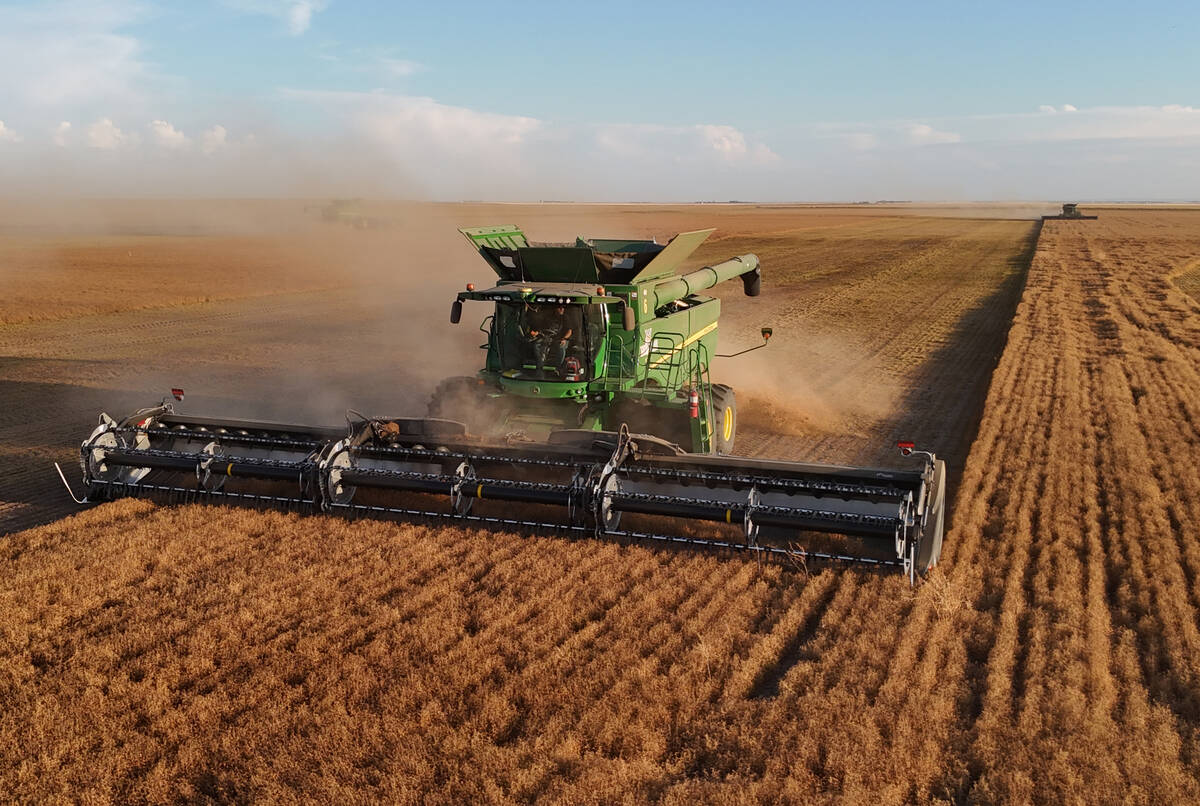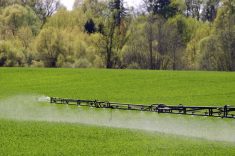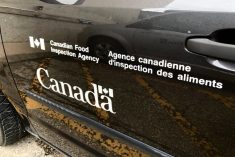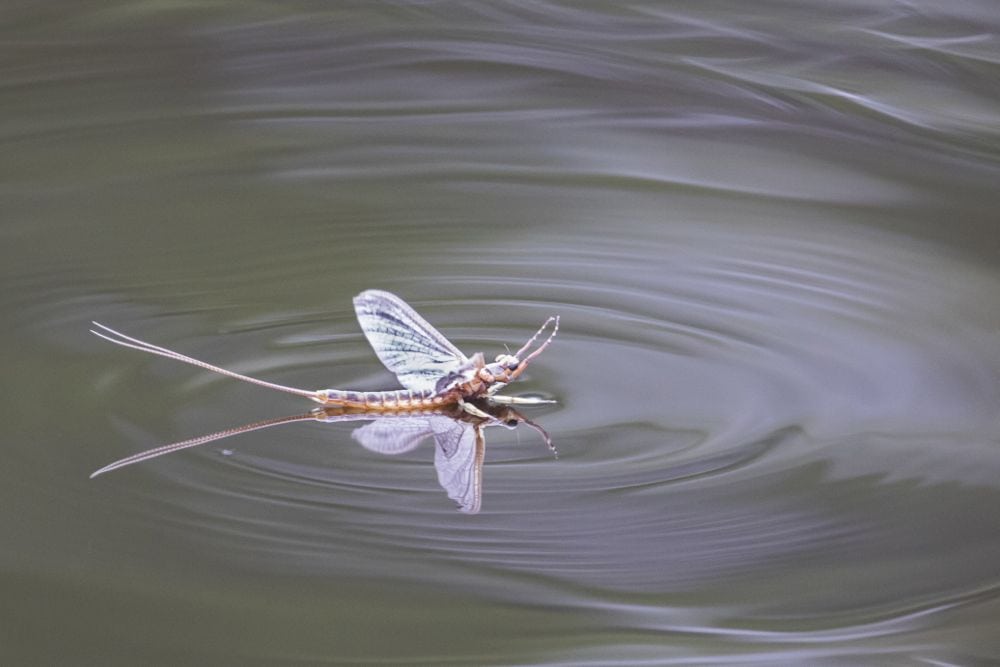North America’s crop herbicide sector is defending one of its classics against a new classification from the World Health Organization’s cancer research agency.
The WHO’s International Agency for Research on Cancer (IARC) on Monday released its classification of “possibly carcinogenic to humans” for 2,4-D herbicide, along with new classifications for now-defunct insecticides DDT and lindane.
Lindane, previously used in canola seed treatments under brand names such as Vitavax RS, Cloak, Foundation and Premiere, was fully phased out of use in Canada by the end of 2004. The IARC on Monday classified it as “carcinogenic to humans” with “sufficient evidence of carcinogenicity.”
Read Also

Pulse Weekly: Canadian pulse production rises
Statistics Canada released its principal field crop estimates on Dec. 4, which showed bumper crops for most pulses.
DDT (dichlorodiphenyltrichloroethane), which was phased out of most uses by the mid-1970s, completely off the market by the end of 1990 and since prohibited from sale or use in Canada, was classified Monday as “probably carcinogenic to humans.”
2,4-D, registered in Canada since 1946, has been evaluated for cancer risks in population-based case-control studies and in cohort studies of workers manufacturing and applying pesticides, the IARC said Monday.
Occupational exposures to 2,4-D come through manufacturing and application, while the “general population” can be exposed through food, water, dust and during spraying. In humans, the IARC said, 2,4-D is “eliminated largely unchanged in the urine.”
Studies involving exposure to mixed herbicides, or to herbicides containing dioxin, were “regarded as uninformative about the carcinogenicity of 2,4-D,” the IARC working group said in its report, published online in The Lancet.
A “historical cohort study” of workers at 2,4-D manufacturing plants in the U.S. showed “some indication of increased risk in the highest categories of estimated exposure,” while population-based case-control studies of 2,4-D exposure looking at lymphoma and leukemia found “mixed” results.
The IARC working group’s consensus “was that there is inadequate evidence in humans for the carcinogenicity of 2,4-D, although a substantial minority considered that the evidence was limited.”
The IARC also cited a study of female mice that showed increased incidence of reticulum-cell sarcoma from “single subcutaneous injections” of the isooctyl ester of 2,4-D, and a study of male rats in which 2,4-D in the diet “induced a positive trend in the incidence of rare brain astrocytomas.”
In all, the IARC working group said it found “limited evidence in experimental animals for the carcinogenicity of 2,4-D, due to methodological concerns regarding the positive studies, although a substantial minority judged the evidence to be sufficient.”
“Mechanistic” studies — that is, studies of the product’s physical processes — showed “strong evidence” that 2,4-D induces oxidative stress that can operate in humans, plus “moderate evidence” that 2,4-D causes immunosuppression.
Putting 2,4-D in its Group 2B (“possibly carcinogenic”), the IARC said the classification was made “considering all the relevant scientific data.”
The agency has previously said its Group 2A (“probably carcinogenic”) and Group 2B (“possibly carcinogenic”) classifications have no “quantitative significance,” but added that by definition, “probably” signifies a “higher level of evidence” than “possibly.”
Dow AgroSciences, which along with Nufarm and Agro-Gor Corp. holds technical registrations on 2,4-D, retorted Monday that the IARC classification is “inconsistent with government findings” from countries including the U.S., Canada, U.K., Germany, France, Japan, Brazil and China, “which have for decades affirmed the safety of 2,4-D when used according to approved labeling.”
By comparison, Dow said in a release, an IARC working group “reviews an incomplete set of information to focus solely on whether a substance or activity could be a carcinogen, not whether it is a carcinogen when used under real-world circumstances.”
The IARC classification, Dow said, “should not be mischaracterized in ways that are misleading and harmful to farmers and consumers.”
John Cuffe, Dow Agro’s leader for regulatory affairs, said the IARC’s findings on 2,4-D “are not the last word even within the WHO, whose JMPR (Joint Meeting on Pesticide Residues) does not consider the handling and use of approved 2,4-D herbicides to pose a cancer risk.”
“No regulatory agency in the world considers 2,4-D to be a carcinogen,” epidemiologist and toxicologist Julie Goodman, a consultant to the 2,4-D Research Task Force, said in a release from the manufacturers’ group after acting as an observer at the recent IARC meeting. “This ranking does not mean that 2,4-D causes or is even likely to cause cancer in people.”
CropLife Canada, a crop chemical industry group, added in a separate statement that the IARC “ranks things based on their potential hazard, not the actual risk that something will cause cancer.”
“No other herbicide in the world has been more thoroughly studied than 2,4-D,” CropLife Canada president Ted Menzies, a former farmer and Alberta MP, said in the same release. “Every health and safety regulator in the world, including Health Canada, has concluded that 2,4-D does not pose an unacceptable risk to human health.”
Health Canada, which last re-evaluated 2,4-D in 2009, has said the herbicide “can be used safely when used according to label directions, with some uses requiring additional protective measures.”
The federal re-evaluation led to aquatic uses of 2,4-D being phased out, and “label improvements” to reduce users’ and applicators’ exposure to the product.
The IARC working group on DDT, lindane and 2,4-D was chaired by Manolis Kogevinas of the Barcelona-based Centre for Research in Environmental Epidemiology (CREAL), and included Thomas Sanderson of the Laval, Que.-based INRS-Institut Armand-Frappier Research Centre as its lone Canadian member.
The next IARC monograph on evaluation of carcinogenic risks to humans will be a review of red meat and processed meat.
The agency is accepting relevant studies until Sept. 11, ahead of its working group’s meeting on the topic, scheduled for Oct. 6-13 in Lyon, France. — AGCanada.com Network
















